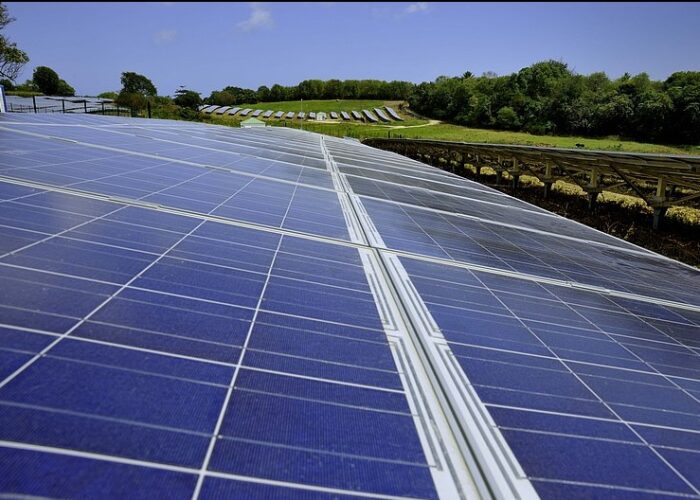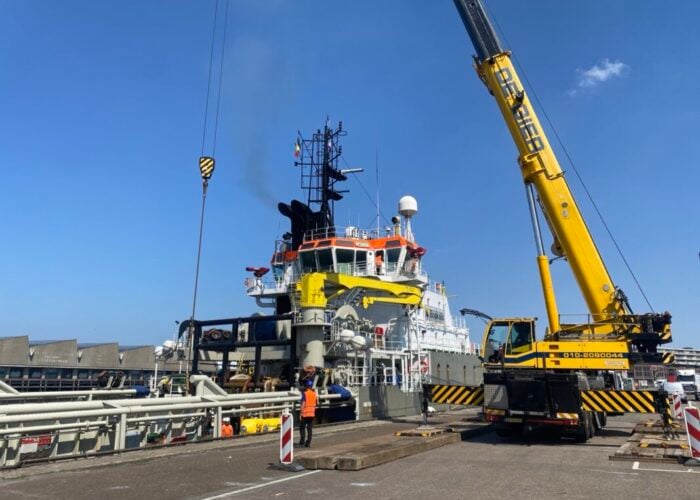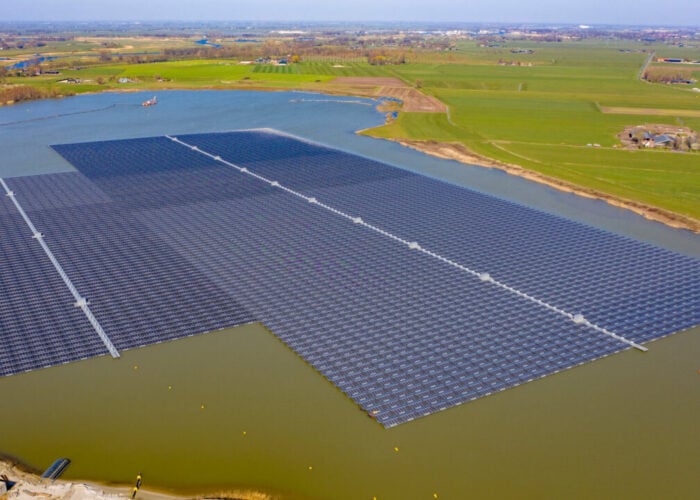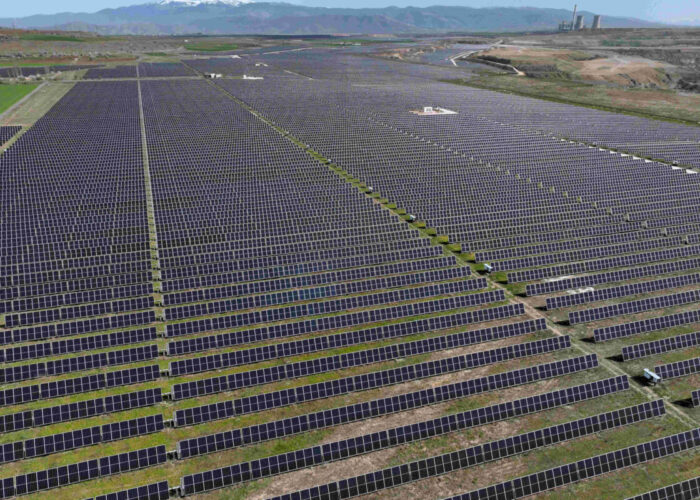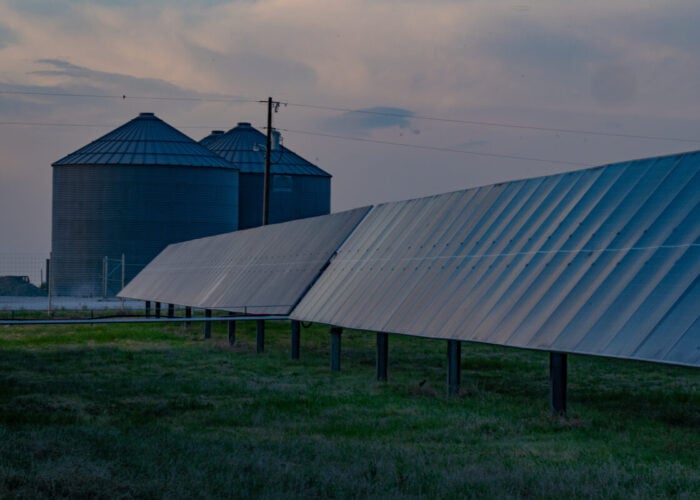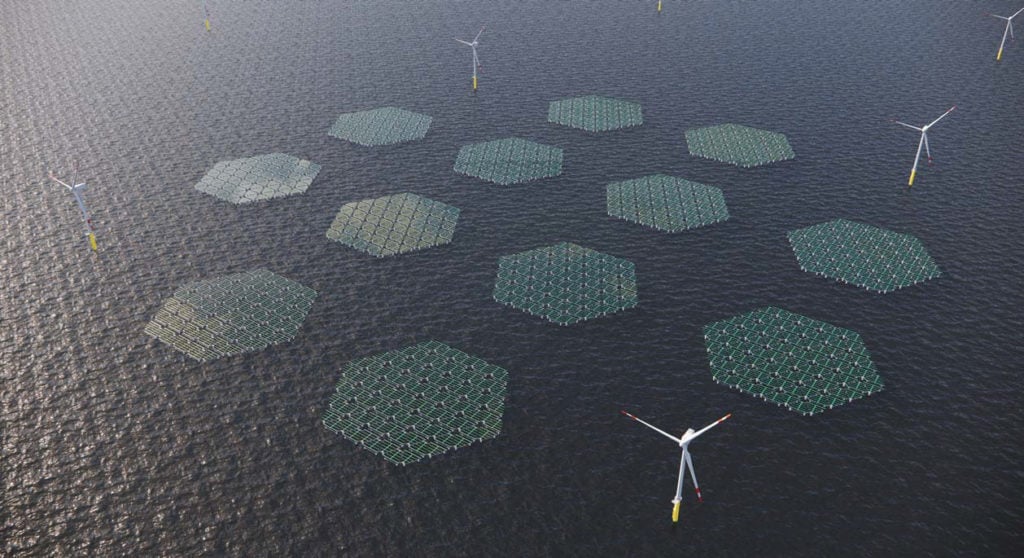
Building on the successes of floating PV projects installed on lakes and dams globally, offshore installations are an emerging opportunity for developers, potentially when co-located with wind farms. George Heynes explores how the industry can move beyond pilot projects to large-scale, commercially viable installations, detailing the challenges and opportunities ahead.
Across the globe, the solar industry continues to see a surge in popularity with the variable renewable energy source able to be deployed across a range of different regions.
Unlock unlimited access for 12 whole months of distinctive global analysis
Photovoltaics International is now included.
- Regular insight and analysis of the industry’s biggest developments
- In-depth interviews with the industry’s leading figures
- Unlimited digital access to the PV Tech Power journal catalogue
- Unlimited digital access to the Photovoltaics International journal catalogue
- Access to more than 1,000 technical papers
- Discounts on Solar Media’s portfolio of events, in-person and virtual
One of the latest, and potentially most important, methods of using solar has now come to the forefront of the industry. Offshore and inshore waters floating solar projects, also known as floatovoltaics, could become a revolutionary technology and prove successful in generating local green energy in areas which currently are hard to develop due to geographical limitations.
Floating solar panels work much the same way as land-based systems. However, the inverters and the arrays are affixed on a floating platform. Combiner boxes collect the direct current electricity after generation, and it is then converted into alternating current by solar inverters.
Floating solar can be deployed in oceans, lakes and rivers in regions where building out the grid can be difficult. Areas such as the Caribbean, Indonesia and the Maldives could significantly benefit from this technology. Pilot projects have been deployed in Europe where the technology continues to see further traction as an additional renewable weapon to the decarbonisation arsenal.
Austrian utility EVN and BayWa. r.e announced last year what they claimed at the time would be Europe’s ‘largest’ floating PV installation, which is to be developed in Grafenwörth, Austria.
Alongside this, Norway and Belgium have both seen a mass influx of the technology via pilot projects. This enables several European testbeds to experiment with the technology and test its feasibility. Other pilot projects are being rolled around the globe and the technology is becoming increasingly likely to expand into fully fledged projects. But what are the opportunities associated with the technology?
How offshore floating solar could take the world by storm
One of the many benefits of offshore floating solar is that the technology can be co-located with existing technologies to boost the energy yields of renewable generation plants.
Hydropower plants can be coupled with offshore floating solar to boost the productivity of sites. According to the World Bank’s Where Sun Meets Water: Floating Solar Market Report, solar capacity can be used to boost the energy yield of assets and may also help manage periods of low water availability by allowing the hydropower plant to operate in ‘peaking’ rather than ‘baseload’ mode.
The report also details other positive effects from the use of offshore floating solar, including the cooling effect from the water body potentially increasing energy yield, the reduction or even elimination of the shading of panels by their surroundings, the elimination of the need for major site preparation and easy installation and deployment.
Hydropower plants are not the only existing renewable generation technology that could be bolstered via the arrival of offshore floating solar. Offshore wind could well be coupled with offshore floating solar to maximise the yields of these mass structures.
This potential has seen significant interest in the North Sea with its many wind farms. These offer the perfect prerequisites for the development of offshore floating solar farms.
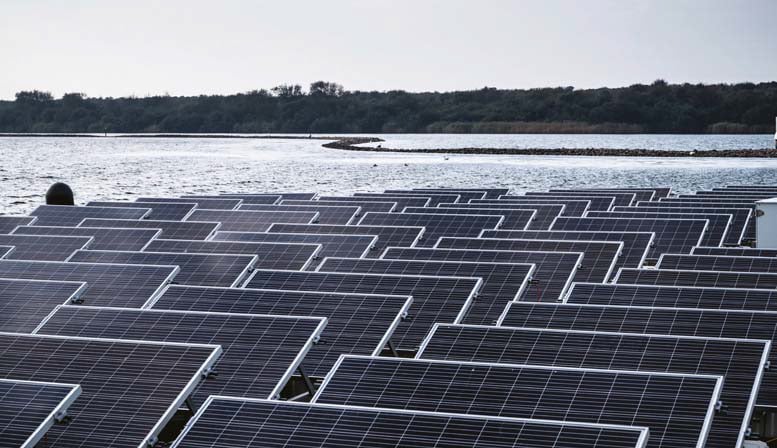
“We believe that if you combine offshore floating solar with offshore wind, the infrastructure is already there and so it is much faster to develop the project. This helps the development of the technology,” says Allard van Hoeken, CEO and founder of Oceans of Energy.
Hoeken also refers to the amount of energy that could be generated from the North Sea alone should solar be coupled with existing offshore wind farms.
“If you combine offshore solar with offshore wind, you can easily generate 50% of all the energy that’s needed in the Netherlands per year with only 5% of the Dutch North Sea,” he says.
This potential showcases how important this technology could be for the overall solar industry and to countries transitioning to a low-carbon energy system.
One of the biggest benefits of using offshore floating solar is the available space. The oceans provide vast areas that could be utilised for the technology whereas, on land, there are many uses competing for space. This could also mitigate concerns over building solar farms on agricultural land – an area which has seen growing concerns in the UK.
This perspective is matched by Chris Willow, head of floating wind development at RWE Offshore Wind, who believes the potential for the technology is huge.
“Offshore solar has the potential to be an exciting evolution of onshore and lake-based technology and opens a new door to GW-scale solar energy generation. The technology unlocks new markets by avoiding the issue of land scarcity,” says Willock.
By providing a means to generate energy offshore, it removes the issues associated with land scarcity, as stated by Willock. This could see the technology utilised in small city-state countries such as Singapore, as referenced by Ingrid Lome, senior naval architect at Moss Maritime, a Norwegian engineering firm dedicated to offshore developments.
“Any country where you have limited space on land for energy production has great potential for offshore floating solar, Singapore being a typical example. A key benefit is being able to have electricity production next to aquaculture, oil and gas production sites or other energy-demanding installations,” Lome says.
This point is crucial. The technology can create microgrids for areas or facilities that are not connected to a wider grid. This highlights the potential of the technology in countries with a lot of islands where it is difficult to create a national grid.
One area in particular which could be provided with a massive boost via this technology is Southeast Asia, in particular Indonesia. This region has masses of islands and less suitable land for solar developments. What the region does have in abundance are large water networks and oceans.
By presenting this technology, it could be influential in decarbonising areas that are located off the national grid. This market opportunity has been highlighted by Francisco Vozza, chief commercial officer at floating solar developer Solar-Duck.
“We’re starting to see commercial and pre-commercial projects in places in Europe like Greece, Italy and the Netherlands. But there are also opportunities in other places like Japan, Bermuda, South Korea and around Southeast Asia. There’s a lot of markets out there where we see applications already commercial today,” Vozza says.
Clearly, the technology could be used to radically scale the renewable generation capacity from the North Sea and other oceans in a bid to accelerate the energy transition at unprecedented rates. However, several challenges and obstacles must be overcome for this to be achieved.
A sea of challenges
Utilising offshore floating solar comes with a range of challenges. Not only are these projects often very expensive to develop, but there is also still so much that is unknown about the technology and how it can affect ecosystems especially underwater.
“The biggest challenge is to develop offshore floating PV solutions (including the anchoring, mooring, float structures, PV modules and electrical components, cables) that are robust enough to withstand the harsh offshore circumstances (salt, moisture, wind, waves) while keeping a low and competitive LCOE (levelised cost of energy),” says Wiep Folkerts, who is responsible for Solar Energy Markets and Programs at Netherlands-based independent research organisation TNO.
“Before offshore solar becomes a commercially viable solution ready for deployment, scientific and technological R&D including small-scale pilots are needed to build up the know-how and practical guidelines regarding performance, long-term reliability of the full solution including the dynamic cabling towards a grid station, ecology and sustainability but also to learn from the failures that should lead to improved designs.
“The required robustness strongly depends on the location of the offshore water body. Circumstances at the North Sea for instance can be very harsh and wave heights above 10 metres are not exceptional, while in tropical regions the circumstances could be less demanding.”
Alongside these issues, structural weight and fatigue life can be major challenges in the development of offshore floating solar.
“The main challenges we see are structural weight and fatigue life, which are closely tied to capex costs. It is not very difficult to design a floater that can withstand offshore environment for 30 years if the cost is not important, but the challenge is to find a solution that has sufficient life at an acceptable cost,” says Lome.
“To improve fatigue life, the structure is often reinforced, and by reinforcing the structure the weight increases, the draught increases and the forces within the FPV park increase. Also, [the fact] that no PV module manufacturer is making salt-proof modules will be a challenge for commercial projects.
“Hopefully, they will come around and develop modules for offshore environment once they see that there is a market for it. Co-location with offshore wind could indeed be an important market. It will reduce capex costs as export cables and substations could be shared, and the energy output will be more stable as it often is sunny when there is now wind and vice versa.”
As stated by Lome, co-location of assets could really help enable the technology to scale. This could be influential in the development of the technology. However, Vozza distinguishes a unique set of challenges facing offshore floating solar: regulatory frameworks.
“I think the main speedbump that we’re really going to have to tackle as an industry is the lack of appropriate and harmonised regulatory frameworks,” Vozza says.
“I think the main challenge is how the various markets are going to adapt regulatory frameworks to really accelerate the deployment. But this market is moving really quickly. It can really make an impact and will scale to GW-scale by 2030.”
Having appropriate regulatory frameworks in place could enable offshore solar developers to plan for the future. However, there is a current lack of framework in place to support the technology. Despite this, as the market continues to pick up towards 2030, it is clear that decisions will be made on a political level and we could see further support implemented for the technology.
This perspective is backed by RWE with the company confirming a lack of regulatory framework could be a major obstacle.
“Offshore solar is a new technology with new risks and challenges. Currently, there is a lack of fit-for-purpose regulatory frameworks or policies to accommodate either hybrid or standalone offshore solar projects,” says Willow.
“This absence of policy is likely to result in a large number of permits being required, which in some markets will involve several consenting bodies/stakeholders. In addition, there is a lack of discussion regarding how offshore solar should be integrated into the existing grid infrastructure.”
Willow also believes there are technical issues to overcome prior to full commercialisation of offshore floating solar. Developers need to “understand how the units perform at sea in real conditions” in a bid to optimise the technology for use around the globe. Once this has been overcome, it could be a breakthrough for the technology.
Offshore floating solar expansion in the North Sea
RWE and SolarDuck are two well-established companies both exploring potential offshore floating developments in the North Sea. One of which has seen the two companies partner on a 5MWp offshore solar demonstrator that will be deployed as part of RWE’s Hollandse Kust West VII offshore wind project in the Netherlands. This is expected to be operational from 2026.
The project will provide RWE and Solar-Duck with important first-hand experience in one of the most challenging offshore environments in the world. These learnings are likely to enable a faster commercialisation of the technology in the future.
Alongside this, the two companies are working together on the Merganser project – a 0.5MWp offshore solar demonstrator in the North Sea, which is expected to be installed in 2023.
Vozza believes the North Sea provides the perfect test bed for offshore floating solar, not only due to its proximity to European countries and offshore wind, but due to the harsh conditions witnessed in this sea.
“If you can make it in the North Sea then you can pretty much make it anywhere,” says Vozza.
“Offshore floating solar really has disruptive potential. If you look at comparable technology which made the move to offshore, I think wind is a classic example.
“It started inland, moving to near shore, moving to offshore, and then moving to floating offshore. Solar is much more affordable and a much more available source of energy. It makes sense for solar to follow the same path.”
Willow on the other hand sees an opportunity in the co-location of offshore wind with offshore floating solar to generate vast quantities of renewable energy.
“The integration of offshore solar systems with offshore wind farms could enable efficient use of the sea space by allowing twice the energy production in the same area,” says Willow.
“In addition, the complementary generation profiles of both technologies allow for a more balanced production profile. We also see synergies in the construction and maintenance of the systems.”
Commercialisation of floatovoltaics
Clearly offshore floating solar has an important role play to in the globe’s renewable future. But one of the biggest questions is when the technology could be ready for wider commercialisation. With many pilot projects across the globe continuously innovating this solution and optimising the technology, the question of “when” becomes even larger.
Folkerts believes industrial-scale offshore floating solar generation could become a reality by the end of the decade. “Offshore solar could be deployed on a GWp scale in the future – this is expected to occur after 2027,” he says. This prediction seems plausible considering the innovation within the sector and the progression of pilot projects being constructed around the globe.
When this technology does achieve wider commercialisation, its potential could be paramount in facilitating the energy transition around the globe.


